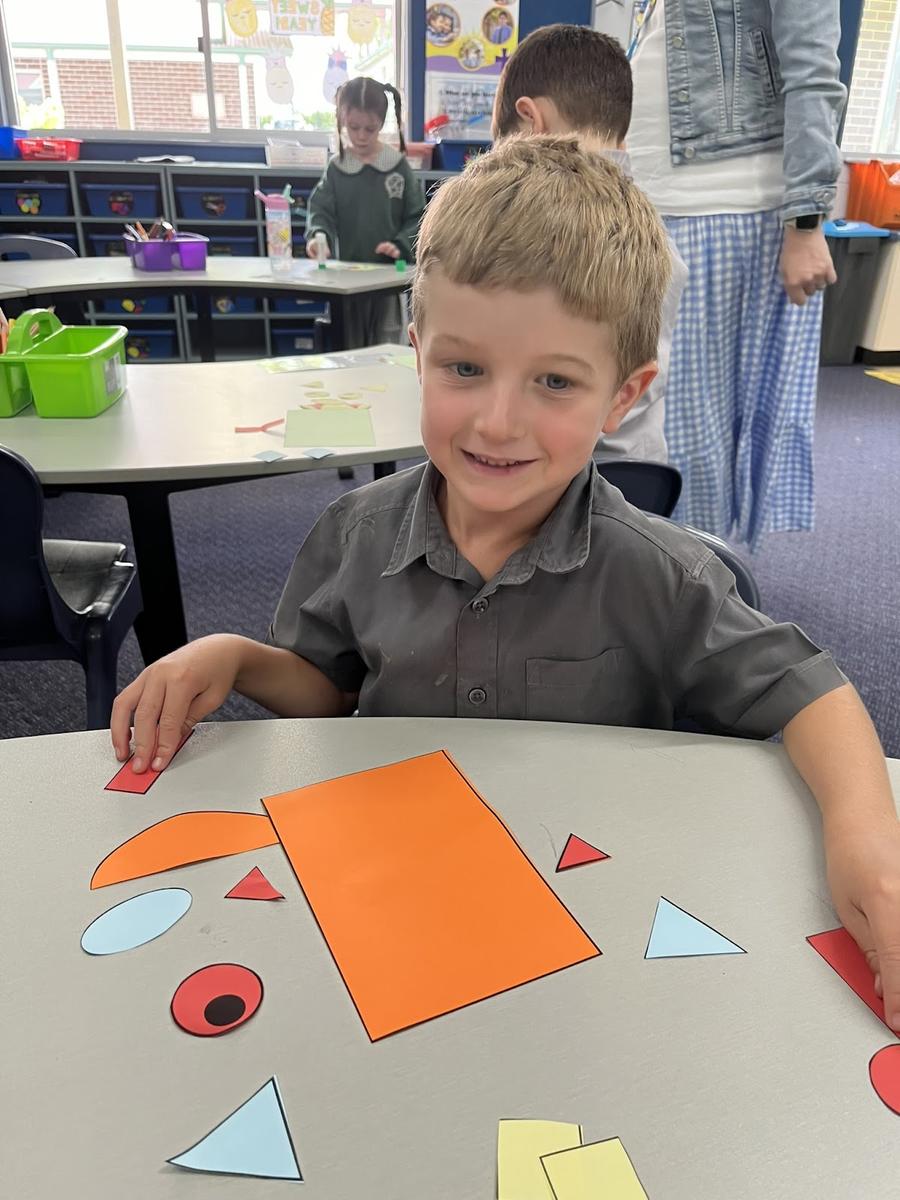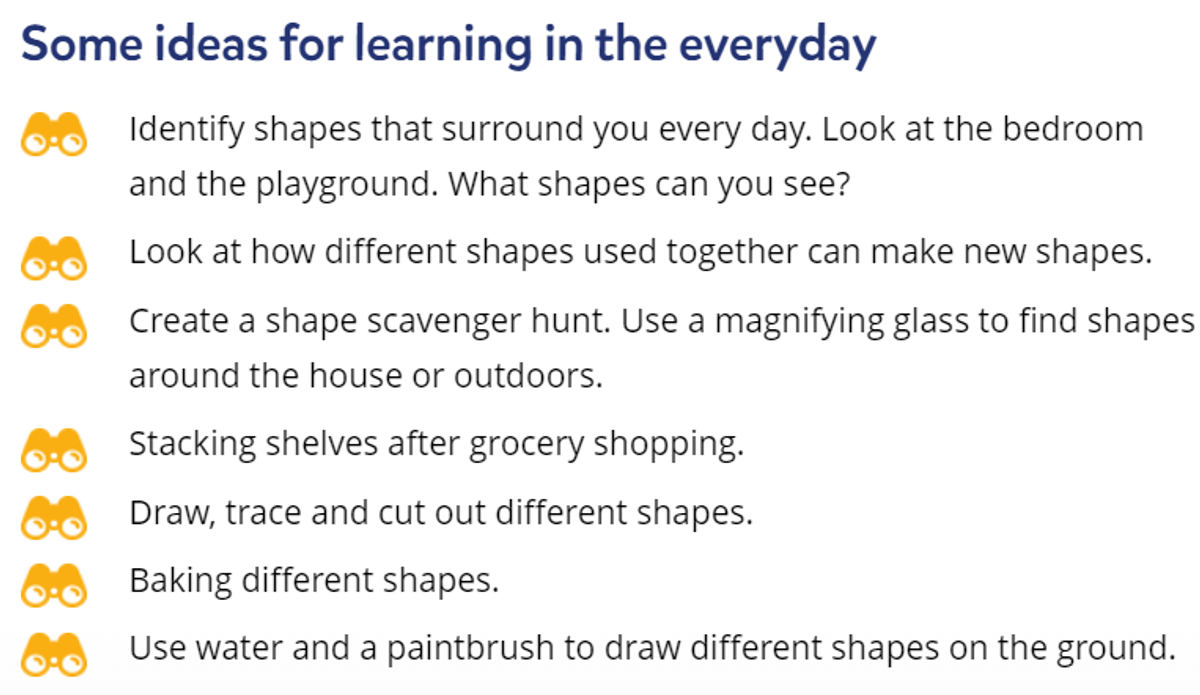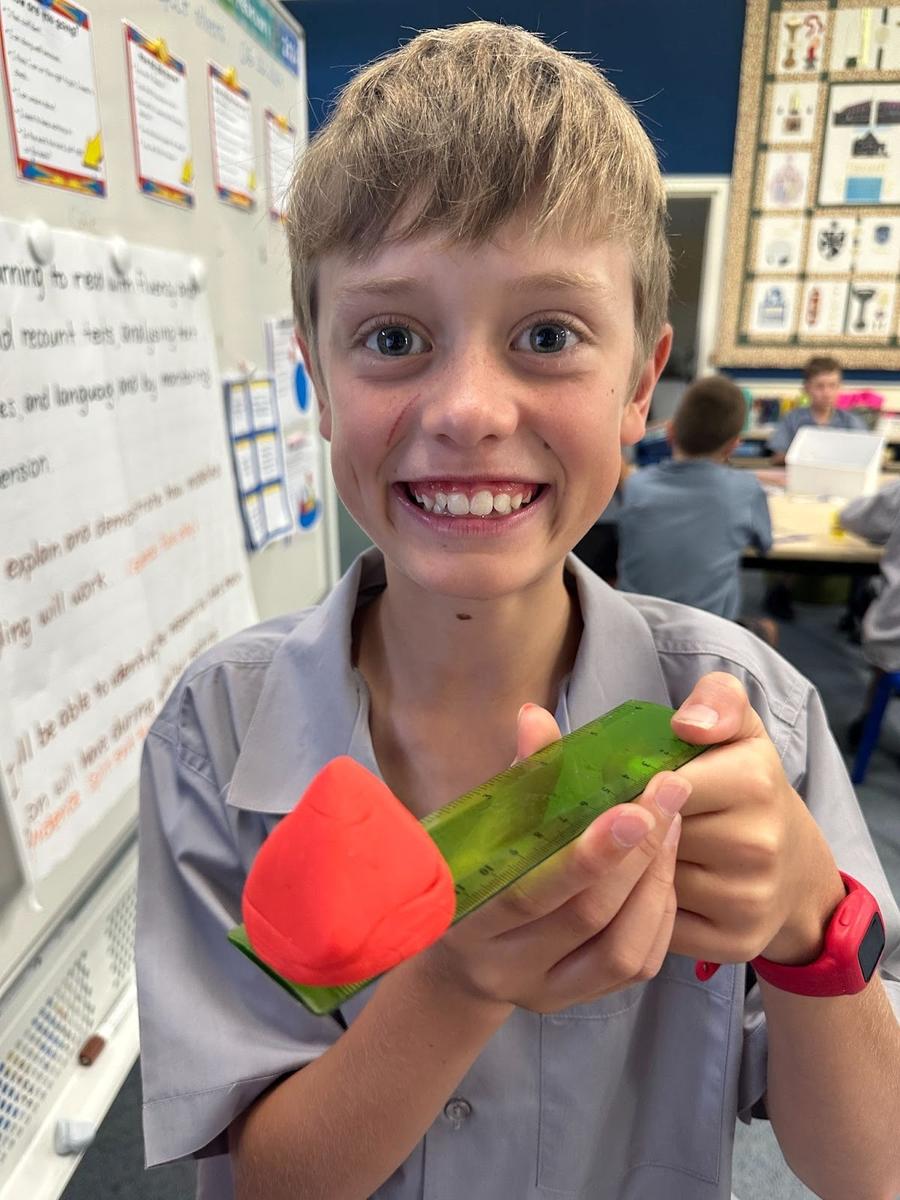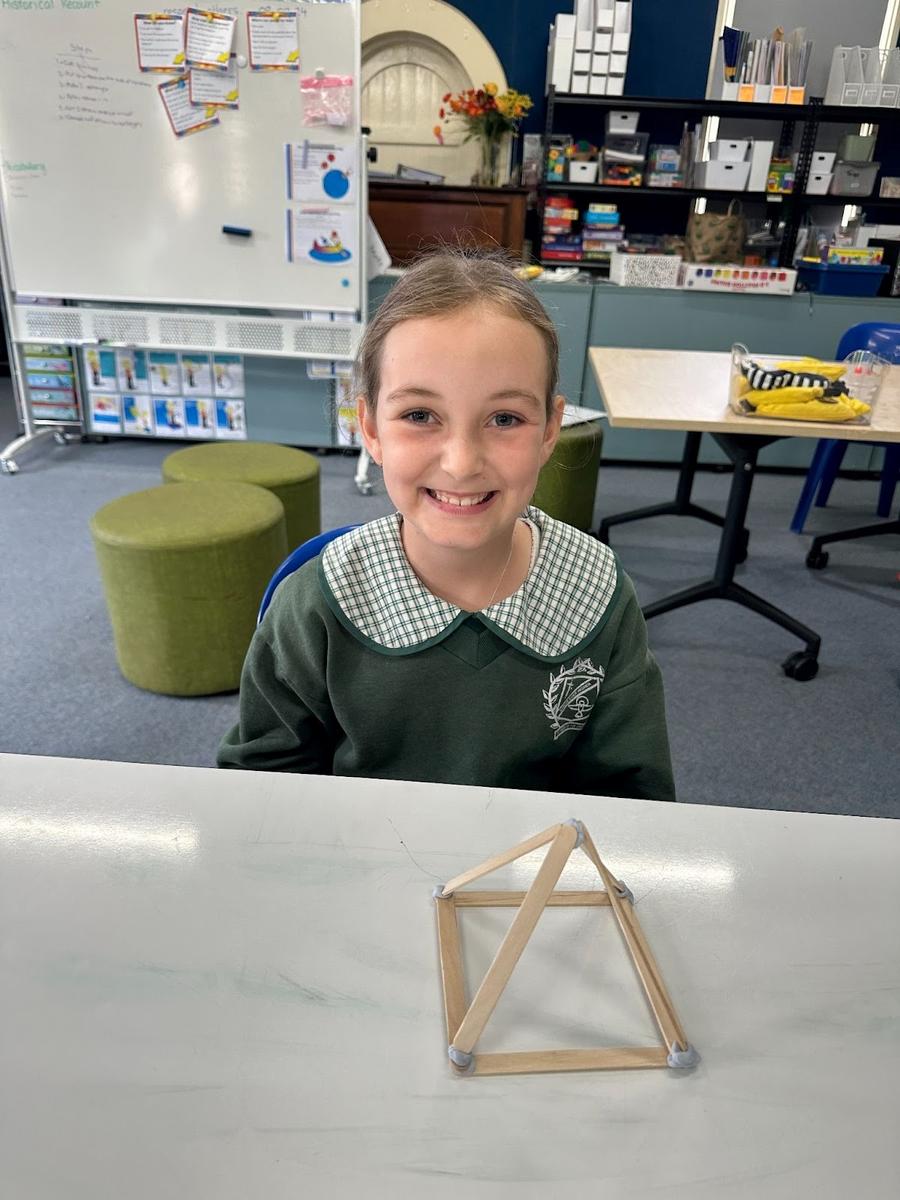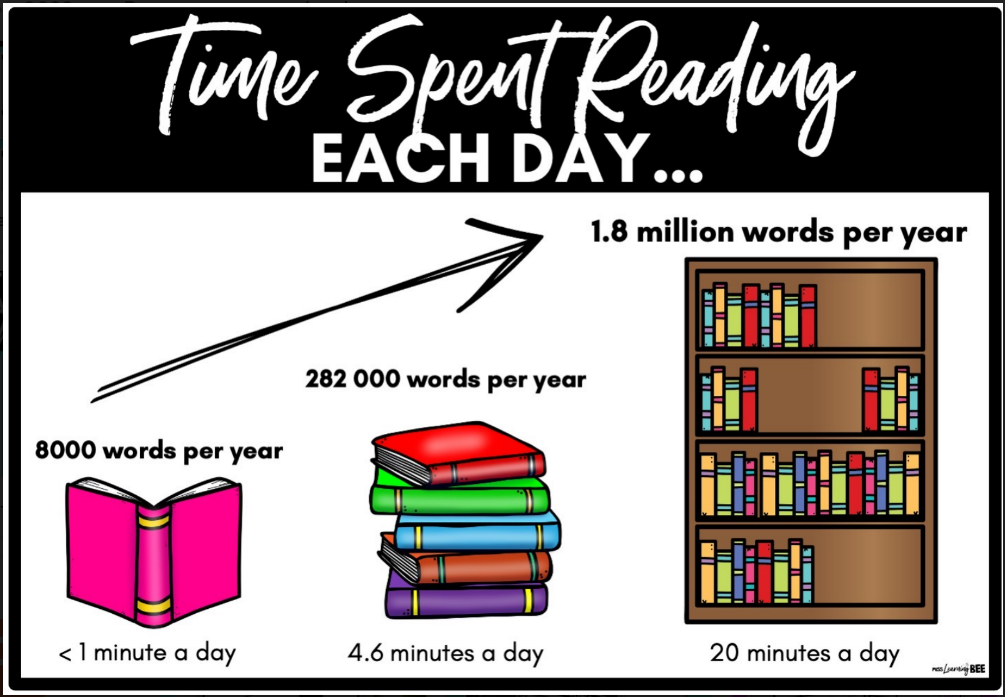A Look at Learning

Week 3, Term 1
Each newsletter information will be published to inform our school community of what is occurring in the Maths space in each stage and provide some helpful tips to support students learning.
Early Stage 1 have been focusing on two-dimensional shapes since they have started at school. You may find the information below helpful to support your childs learning about shapes and objects.
- Read books to your child and talk about the shapes you can see within the pictures, eg ‘The roof on the house is a triangle'.
- Look for objects inside or outside the house that are shaped like a circle, triangle, rectangle or square. Look for different sized shapes and shapes in different positions.
- Involve your child in craft activities such as making your own gift wrapping by printing painted shapes onto paper using corks, empty cotton reels or sponges.
- Make shadows on the ground or on a wall using your body or hands and talk about the shapes.
- Fold paper to make a hat or boat and talk about the shapes made as you fold the paper.
- Collect scrap paper or used gift wrapping and encourage your child to cut and glue pieces to make a picture.
- Play ‘I spy' games and describe things by size and shape, eg "I spy with my little eye something that is big and shaped like a square".
- Make biscuits using cookie cutters or make pretend biscuits from modelling dough. Talk about the shape of each biscuit.
Early Stage 1 have been having lots of fun using a range of 2D shapes to create their own shape monsters.
Stage 1 have also been focusing on two-dimensional shapes for the last 2 weeks. See the following document created by Monash University Exploring shapes. This document is suited for younger grades as well but it is useful in encouraging conversations about shapes in their environment. From CSNSW
- The main way a parent can add to the experience of tessellating shapes is asking gentle questions along the way. Prompts such as "I notice that you're making a pattern. What can you tell me about your pattern?" are helpful in getting children to describe their thinking. Tessellating tiles come with a deep mathematical structure. Kids notice that structure through their play. There's not really much more needed in order for children to have a productive experience playing with them.
Stage 2 have been focusing on Position. Teaching children about using directional language and understanding routes with grid maps can be both educational and fun. Here are some tips help your children develop these skills:
Start with Basic Concepts:
- Begin by introducing basic concepts like left, right, up, down, forward, and backward in everyday activities.
- Use simple commands like "Go left to the kitchen" or "Move forward two steps."
Use Everyday Language:
- Incorporate directional language into daily routines. For example, when walking or driving, talk about the directions you're going.
- Discuss the cardinal directions (north, south, east, west) in relation to your home or other familiar places.
Create a Home Grid Map:
- Make a simple grid map of your home or a room. Use graph paper or draw a grid on a large sheet of paper.
- Label key areas in the house (e.g., kitchen, bedroom) and practice giving and following directions within the grid.
Play Map Games:
- Create fun games that involve maps and directions. For instance, hide a toy and provide directions for your child to find it.
- Make a treasure map together, marking key locations and using directional language to guide the way.
Explore Outdoor Environments:
- Take walks or outings to parks and use directional language to describe the route. Point out landmarks and discuss the path you're taking.
- Bring a simple map of the area and involve your child in navigating.
Use Technology:
- Utilise map apps or online maps to show your child how to navigate digitally. Explain the symbols and icons commonly used on maps.
- Play interactive games or apps that involve following directions on a virtual map.
Remember that learning directional language and map skills is a gradual process, and repetition and practical application will reinforce the concepts over time. Make the learning experience enjoyable and hands-on to keep your child engaged.
Introduce Grid Maps in Play:
- Incorporate grid maps into play activities. Create a grid on a large surface and use toy cars or figurines to move around following specific directions.
- Build a Lego city with a grid layout and use it as a map for storytelling and exploration.
Read Map-Related Books:
- Explore children's books that involve maps and directions. This can make the learning experience more engaging and enjoyable.
- Discuss the maps in the books and relate them to real-world examples.
Be Patient and Encourage Exploration:
- Allow your child to explore and make mistakes. Learning directional skills is a process, and patience is key.
- Encourage questions and discussions about maps, directions, and routes.
Apply Learning to Real-Life Situations:
- When planning outings or vacations, involve your child in mapping out the route and discussing the directions you'll take.
- Emphasise the practical applications of directional skills in daily life.
In Stage 3 the focus have been on three-dimensional objects. Students have explored the different properties of 3D objects, compared the difference between prism and pyramids, explored cross sections and created a range of different models. The opportunity to get to create 3D models has been a big hit with all students as well as being a conversation started. The information below may be helpful in supporting your child’s learning at home.
- In our world we are surrounded by 3 Dimensional objects. At school your child has been learning about prisms and pyramids. Ask them to explain what the difference is between these two categories of 3D objects. They should also be able to explain the different types of prisms and pyramids and how they are named.
- If you are assembling items, like furniture, ask your child to help you with the assembly. If instructions come with the assembly, show them the instructions and the diagrams that assist with constructing the item into a fully-formed object.
- Students have been gaining an understanding of nets, ie. what a 3D object would look like if some of its sides were unattached and layed flat. Encourage your child to pull apart any containers that may be in your recycling to help them understand the net of that object.
- Create fun and relatively easy origami by searching website ideas to transform 2D shape into a 3D object.
- Show your child architectural plans of your house or other structures
- Discuss the different shapes that make up your house, or other homes in your street.
SORA
Please remember that all students have access to SORA, our digital library platform. Simply access the website Here.
- ACEN Member Collection
or select
- I have a setup code (at the bottom of the screen)
YOUR SETUP CODE IS: CENETAU
You will be prompted to:
- Sign into your school
- Select ACEN Member Collection from the drop down menu.
- Log in using your own personal username and password
Username: is your school email address
Password: is the same password that you use to log into your Chromebooks every day at school!

